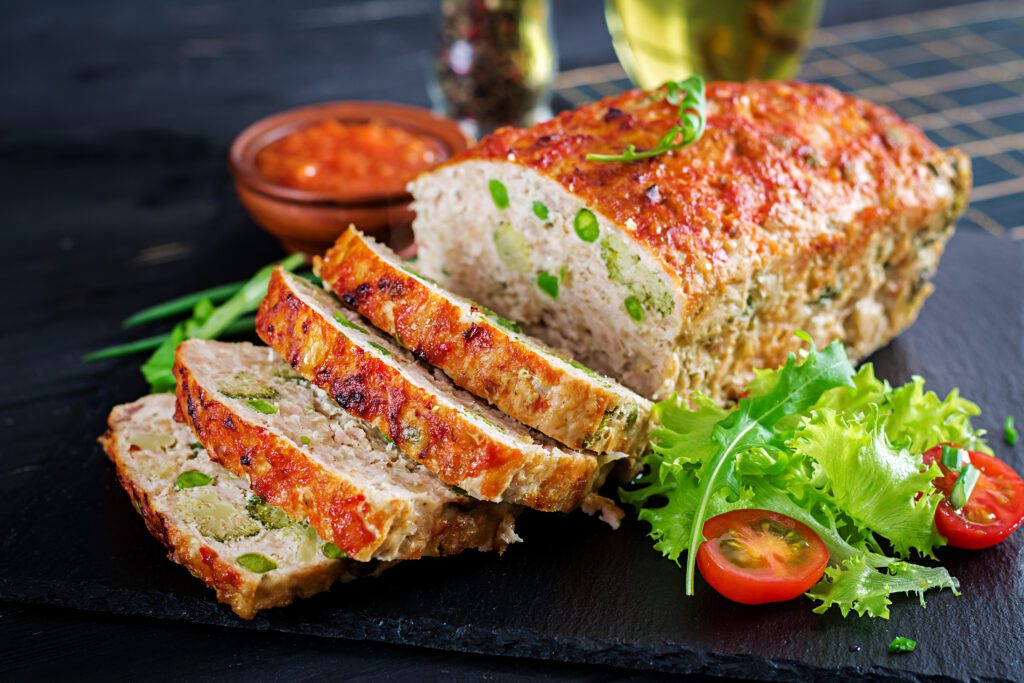Introduction
Ground beef is a versatile and popular ingredient in many kitchens around the world. Whether used in burgers, meatloaf, or meatballs, it forms the basis of countless beloved dishes. But have you ever wondered what happens when you add flour to ground beef? In this article, we’ll explore the science and culinary benefits of this common practice.
History and Context
Flour has been used in cooking for centuries, evolving from a basic ingredient to a key component in various recipes. In traditional dishes, especially meatloaf and meatballs, flour is often combined with ground beef. This practice not only helps bind the meat but also enhances its texture and flavor. The use of different types of flour varies across cultures, each bringing its unique twist to the dish.
For more on the history of flour in cooking, read this article on the history of flour.
Chemical Reactions and Cooking Science
Understanding the chemical reactions involved can shed light on why adding flour to ground beef is beneficial. One key reaction is the Maillard Reaction, which is responsible for the browning and flavor development in cooked meat. Flour enhances this reaction, resulting in a richer, more complex flavor profile.
Additionally, flour aids in moisture retention by absorbing some of the meat’s juices, preventing it from drying out during cooking. This is particularly useful in recipes like meatballs and meatloaf, where a moist, tender texture is desired.
For more on the Maillard Reaction, check out this article.
Benefits of Adding Flour
- Improved Texture and Binding Properties: Flour acts as a binding agent, holding the ground beef together. This is essential in recipes like meatballs and meatloaf, where a firm texture is needed.
- Enhanced Flavor Profile: The Maillard Reaction, boosted by flour, leads to a richer flavor, especially in dishes that are browned or seared.
- Better Consistency: Flour helps achieve a consistent texture throughout the meat mixture, ensuring that the final dish is evenly cooked and flavorful.
- Thickening Agent: In sauces and gravies, flour adds body and richness, making the dish more satisfying.
Potential Drawbacks
While adding flour offers many benefits, there are some potential drawbacks to consider:
- Possible Alteration in Taste: Flour can sometimes alter the natural flavor of the meat, which may not be desirable in all recipes.
- Changes in Nutritional Content: Flour increases the carbohydrate content of the dish, which may be a concern for those on low-carb or gluten-free diets.
- Risk of Over-Thickening: Using too much flour can lead to a gummy or overly thick texture, so it’s important to measure carefully.
Different Types of Flour and Their Effects
- All-Purpose Flour: Versatile and commonly used, providing good binding and texture enhancement.
- Bread Flour: With higher gluten content, it creates a chewier texture, which may be desirable in some recipes.
- Almond Flour: A low-carb, gluten-free option that adds a slightly nutty flavor.
- Gluten-Free Flour Options: Suitable for those with gluten intolerance, though they may require additional binding agents for the desired texture.
For more on different types of flour, visit this guide.
Common Recipes
- Classic Meatloaf: Flour helps bind the meat and ingredients, adding moisture and improving overall texture. Check out our Classic Meatloaf Recipe.
- Meatballs with Flour: Flour ensures the meatballs hold their shape during cooking and enhances flavor and texture. See our guide to Making Perfect Meatballs.
- Ground Beef Patties/Burgers: Flour can help patties hold together and prevent them from drying out during cooking. Learn more about Best Practices for Juicy Burgers.
- Chili and Stews: Flour acts as a thickening agent, adding body and richness to the dish. For a hearty chili recipe, visit our Ultimate Chili Guide.
Expert Opinions and Tips
Culinary experts often recommend adding flour to ground beef for its binding and moisture-retention properties. The key is to balance the amount of flour with other ingredients. Too much flour can result in a dense texture, while too little may not provide the desired effect.
Best Practices:
- Use 1-2 tablespoons of flour per pound of ground beef.
- Mix the flour thoroughly to ensure even distribution.
- Experiment with different types of flour to find the one that best suits your recipe.
Common Mistakes to Avoid:
- Adding too much flour, leading to a gummy texture.
- Not mixing the flour evenly, resulting in an inconsistent texture.
FAQs
- Why do you add flour to ground beef?
Flour helps bind the meat, retain moisture, and enhance the texture and flavor of the dish. - Does flour help meat stick together?
Yes, flour acts as a binding agent, helping ground beef hold its shape during cooking. - Can I use other binders instead of flour in ground beef recipes?
Yes, alternatives like breadcrumbs, eggs, and oats can be used, though the texture and flavor may vary. - How much flour should I add?
Typically, 1-2 tablespoons per pound of ground beef is sufficient, but adjust based on the recipe and desired texture. - What is the best type of flour to use?
All-purpose flour is versatile and commonly used, but you can experiment with other types based on your dietary needs and preferences.
Conclusion
Incorporating flour into ground beef can significantly enhance your culinary creations. Whether you’re making meatballs, meatloaf, or burgers, the addition of flour improves texture, retains moisture, and enhances flavor. While there are some potential drawbacks, the benefits often outweigh them, making this a valuable technique in the kitchen. Next time you’re cooking with ground beef, consider adding a bit of flour and experience the difference for yourself.
Happy cooking!





